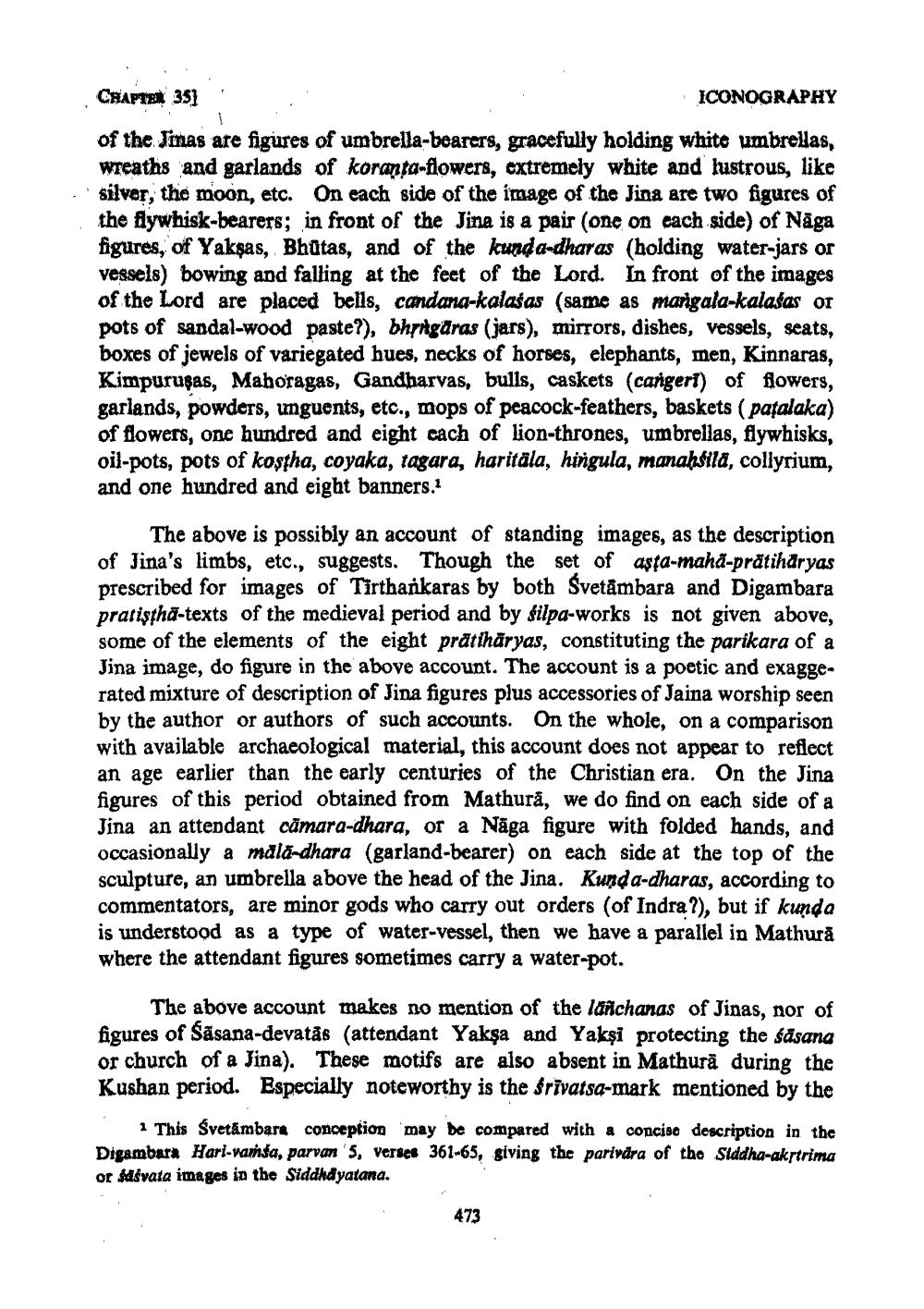________________
CHAPTER 351
ICONOGRAPHY of the Jinas are figures of umbrella-bearers, gracefully holding white umbrellas, wreaths and garlands of koranta-flowers, extremely white and lustrous, like silver, the moon, etc. On each side of the image of the Jina are two figures of the flywhisk-bearers; in front of the Jina is a pair (one on each side) of Nāga figures, of Yaksas, Bhutas, and of the kunda-dharas (holding water-jars or vessels) bowing and falling at the feet of the Lord. In front of the images of the Lord are placed bells, candana-kalasas (same as margala-kalašas or pots of sandal-wood paste?), bhringdras (jars), mirrors, dishes, vessels, seats, boxes of jewels of variegated hues, necks of horses, elephants, men, Kinnaras, Kimpurusas, Mahoragas, Gandharvas, bulls, caskets (cangert) of flowers, garlands, powders, imguents, etc., mops of peacock-feathers, baskets (patalaka) of flowers, one hundred and eight cach of lion-thrones, umbrellas, flywhisks, oil-pots, pots of kostha, coyaka, tagara, haritala, hingula, manahsila, collyrium, and one hundred and eight banners.
The above is possibly an account of standing images, as the description of Jina's limbs, etc., suggests. Though the set of asta-maha-prătiharyas prescribed for images of Tirtharkaras by both Svetambara and Digambara pratişthă-texts of the medieval period and by silpa-works is not given above, some of the elements of the eight prätthāryas, constituting the parikara of a Jina image, do figure in the above account. The account is a poetic and exaggerated mixture of description of Jina figures plus accessories of Jaina worship seen by the author or authors of such accounts. On the whole, on a comparison with available archaeological material, this account does not appear to reflect an age earlier than the early centuries of the Christian era. On the Jina figures of this period obtained from Mathura, we do find on each side of a Jina an attendant cămara-dhara, or a Nāga figure with folded hands, and occasionally a mala-dhara (garland-bearer) on each side at the top of the sculpture, an umbrella above the head of the Jina. Kunda-dharas, according to commentators, are minor gods who carry out orders (of Indra?), but if kunda is understood as a type of water-vessel, then we have a parallel in Mathură where the attendant figures sometimes carry a water-pot.
The above account makes no mention of the lanchanas of Jinas, nor of figures of Sasana-devatás (attendant Yakşa and Yakşi protecting the śåsana or church of a Jina). These motifs are also absent in Mathură during the Kushan period. Especially noteworthy is the Srivatsa-mark mentioned by the
1 This Svetämbara conception may be compared with a conciso description in the Digambara Hari-vanta, parvan 's, verser 361-65, giving the parivdra of the Siddha-akstrima or Hivata images in the Siddhdyatana.
473




